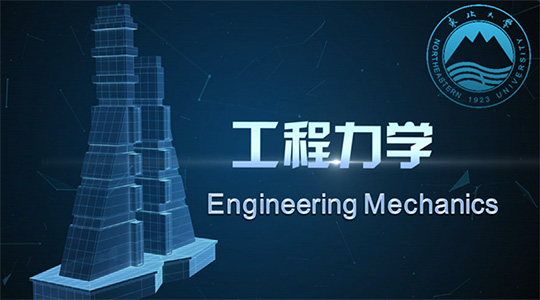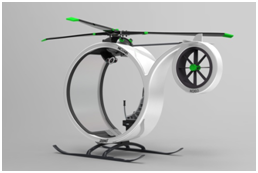
Thermal Physics课程:前往报名学习
Hello, everyone. We are the thermal teaching team of Xi 'an Jiaotong University. We are very glad to meet and know learners from all over the world. We are going to take you into the thermal world. Thermal physics is a discipline that studies heat phenomenon and its law. The phenomenon of heat is closely related to the development of our life and society, like the small thermometer, the gap in the road, or the big heat engine, rocket, shenzhou spaceship and so on. So we can say thermal phenomenon is almost
开设学校:西安交通大学;学科:理学、
Hello, everyone. We are the thermal teaching team of Xi 'an Jiaotong University. We are very glad to meet and know learners from all over the world. We are going to take you into the thermal world. Thermal physics is a discipline that studies heat phenomenon and its law. The phenomenon of heat is closely related to the development of our life and society, like the small thermometer, the gap in the road, or the big heat engine, rocket, shenzhou spaceship and so on. So we can say thermal phenomenon is almost
-1.0 Introduction
-1.1 The macroscopic description method and the microscopic one
--1.1Macroscopic and microscopic description method
--1.1Macroscopic and microscopic description method
-1.2 Thermodynamic systems and equilibrium states
--1.2Thermodynamic systems and equilibrium states
--1.2Thermodynamic systems and equilibrium states
-1.3 Temperature, empirical temperature scale
--1.3Temperature, empirical thermometric scale
--1.3Temperature, empirical thermometric scale
-1.4 Absolute temperature scale
--1.4Absolute thermometric scale
--1.4Absolute thermometric scale
-1.5 Equation of state
--1.5-2Examples of an ideal gas equation
--1.5-2Examples of an ideal gas equation
-The thermometric scale and thermometers
-Homework of Chapter 1 Introduction -- the macro pa
-1.6 A microscopic model of matter
--1.6-2A microscopic model of matter
--1.6-2A microscopic model of matter
-1.7 A microscopic model of an ideal gas
--1.7A microscopic model of the ideal gas
--1.7A microscopic model of the ideal gas
-1.8 A preliminary theory of microscopic description of an ideal gas
--1.8-1Preliminary theory of microscopic description of the ideal gases (1)
--1.8-1Preliminary theory of microscopic description of the ideal gases (1)
--1.8-2Preliminary theory of microscopic description of the ideal gases (2)
--1.8-2Preliminary theory of microscopic description of the ideal gases (2)
--1.8-3Preliminary theory of microscopic description of the ideal gases (3)
--1.8-3Preliminary theory of microscopic description of the ideal gases (3)
--1.8-4Examples of average translational kinetic energy and root-mean-square speed
--1.8-4Examples of average translational kinetic energy and root-mean-square speed
-1.9 The inter-molecular kinetic energy of real gas
--1.9Intermolecular forces and potential energy of real gas
--1.9Intermolecular forces and potential energy of real gas
-1.10 Van der Waals equation
-Homework of Week 2: Chapter 1 Introduction -- the micro part
-2.1 Molecular dynamics theory and statistical Physics
--2.1Molecular dynamics theory and statistical physics
--2.1Molecular dynamics theory and statistical physics
-2.2 The basics of probability theory
--2.2The basics of probability theory
--2.2The basics of probability theory
-2.3 Probability distribution function
--2.3Probability distribution function
--2.3Probability distribution function
-2.4 Molecular beam experiments
--2.4Molecular beam experiments
--2.4Molecular beam experiments
-2.5 Velocity space
-2.6 Maxwell rate distribution
--2.6-1Maxwell speed distribution
--2.6-1Maxwell speed distribution
--2.6-2An example of the distribution of translational kinetic energy of molecules
--2.6-2An example of the distribution of translational kinetic energy of molecules
-2.7 Three typical averages of molecular rates
--2.7-1Three statistical averages of molecular speed
--2.7-1Three statistical averages of molecular speed
--2.7-2An example of molecular distribution
--2.7-2An example of molecular distribution
--2.7-3Examples of Maxwell speed distribution
--2.7-3Examples of Maxwell speed distribution
-Three typical statistical averages of speed
-Homework of Week 3: Basis of probability theory and Maxwell
-2.8 Maxwell velocity distribution
-- 2.8Maxwell velocity distribution
--2.8Maxwell velocity distribution
-2.9 Velocity component distribution and velocity distribution relative to the most probable rate
--2.9The velocity component and the speed distribution relative to the most probable speed
--2.9The velocity component and the speed distribution relative to the most probable speed
-2.10 The number of gas molecules hitting the wall from Maxwell velocity distribution and pressure fo
--2.10Deriving the formula for the wall-hitting number and pressure of gas molecules from Maxwell velo
--2.10Deriving the formula for the wall-hitting number and pressure of gas molecules from Maxwell velo
--2.10-2An example of a small hole discharge
--2.10-2An example of a small hole discharge
-2.11 Isothermal atmospheric pressure formula
--2.11Isothermal barometric formula
--2.11Isothermal barometric formula
--2.11-2Examples of an isothermal barometric formula
--2.11-2Examples of an isothermal barometric formula
-2.12 Boltzmann distribution
-2.13 The radial distribution of suspended particles in the rotating body and super-centrifugal techn
--2.13Radial distribution of suspended particles in a rotator and ultracentrifugation
--2.13Radial distribution of suspended particles in a rotator and ultracentrifugation
-Most probable velocity and most probable speed
-Homework of Week 4: Chapter 2 Equilibrium state theory of gas dynamics -- Maxwell velocity distribution and Bol
-2.14 Heat capacity and internal energy of a monatomic ideal gas
--2.14The heat capacity and internal energy of the monatomic ideal gas
--2.14The heat capacity and internal energy of the monatomic ideal gas
-2.15 Degrees of freedom and degrees of freedom
--2.15Degree of Freedom and the Number of It
--2.15Degree of Freedom and the Number of It
-2.16 Energy equipartition theorem
--2.16Theorem of equipartition of energy
--2.16Theorem of equipartition of energy
--2.16-2Examples of the Theorem of Equipartition of Energy
--2.16-2Examples of the Theorem of Equipartition of Energy
-2.17 Limitations of the equipartition theorem
--2.17The Limitation of the Theorem of Equipartition of Energy
--2.17The Limitation of the Theorem of Equipartition of Energy
-Equipartition theorem of energy
-Homework of Week 5 Equipartition theorem of energy
-3.1 Macroscopic law of viscosity phenomena
--3.1The macro law of the phenomenon of viscosity
--3.1The macro law of the phenomenon of viscosity
-3.2 Macroscopic law of heat conduction phenomenon
--3.2The macro law of thermal conduction phenomenon
--3.2The macro law of thermal conduction phenomenon
-3.3 Macroscopic law of diffusion phenomenon
--3.3The macro law of diffusion phenomenon
--3.3The macro law of diffusion phenomenon
--3.3-2Examples of the macro law of gas transport phenomenon
--3.3-2Examples of the macro law of gas transport phenomenon
-3.4 The mean free path of a gas molecule
--3.4-1Mean free path of gas molecules
--3.4-1Mean free path of gas molecules
--3.4-2The mean free path examples of gas molecules
--3.4-2The mean free path examples of gas molecules
-3.5 The distribution of gas molecules in a free path
--3.5Distribution of gas molecules in free path
--3.5Distribution of gas molecules in free path
-3.6 Derivation of gas transport coefficient
--3.6-1Derivation of gas transport coefficient: viscosity coefficient of gas
--3.6-1Derivation of gas transport coefficient: viscosity coefficient of gas
--3.6-2Derivation of gas transport coefficient thermal conductivity coefficient of gas
--3.6-2Derivation of gas transport coefficient thermal conductivity coefficient of gas
--3.6-3Derivation of gas transport coefficient and diffusion coefficient of gas
--3.6-3Derivation of gas transport coefficient and diffusion coefficient of gas
-3.7 Thermal conductivity in rarefied gases
--3.7Heat conductivity in thin gas
--3.7Heat conductivity in thin gas
-Homework of Chapter 3
-4.1 Reversible and irreversible processes
--4.1Reversible and Irreversible Process
--4.1Reversible and Irreversible Process
-4.2 Work and heat
-4.3 The first law of thermodynamics
--4.3-1First Law of Thermodynamics
--4.3-1First Law of Thermodynamics
-4.4 The heat capacity and enthalpy
--4.4Heat capacity and enthalpy
--4.4Heat capacity and enthalpy
-4.5 Internal energy of ideal gases and Joule experiment
--4.5Internal energy of the ideal gas and Joule experiment
--4.5Internal energy of the ideal gas and Joule experiment
-4.6 The same-body, isobaric, and isothermal processes of an
--4.6-1Isochoric, Isobaric and Isothermal Processes of the Ideal Gas
--4.6-1Isochoric, Isobaric and Isothermal Processes of the Ideal Gas
--4.6-2Examples of Isochoric, Isobaric and Isothermal Processes of the Ideal Gas
--4.6-2Examples of Isochoric, Isobaric and Isothermal Processes of the Ideal Gas
-Change in adiabatic free expansion temperature of a real gas
-Homework of Chapter 4 The first Law of thermodynamics
-4.7 The adiabatic process for an ideal gas
--4.7-1Adiabatic process of the ideal gas
--4.7-1Adiabatic process of the ideal gas
--4.7-2Examples of adiabatic process 1
--4.7-2Examples of adiabatic process 1
--4.7-3Examples of adiabatic process 2
--4.7-3Examples of adiabatic process 2
--4.7-4Examples of adiabatic process 3
--4.7-4Examples of adiabatic process 3
--4.7-5Example of the First Law of Thermodynamics
--4.7-5Example of the First Law of Thermodynamics
-4.8 The multiparty process for an ideal gas
--4.8-1The Ideal Gas Polytropic Process
--4.8-1The Ideal Gas Polytropic Process
--4.8-2Example of polytropic process
--4.8-2Example of polytropic process
--4.8-3Example of non-polytropic process
--4.8-3Example of non-polytropic process
-4.9 Heat engine
--4.9-1Heat engine, Carnot heat engine
--4.9-1Heat engine, Carnot heat engine
--4.9-2Examples of Heat Engine 1
--4.9-2Examples of Heat Engine 1
--4.9-3Examples of Heat Engine 2
--4.9-3Examples of Heat Engine 2
-4.10 Refrigeration cycle
--4.10-1Refrigeration cycle, Carnot refrigeration cycle
--4.10-1Refrigeration cycle, Carnot refrigeration cycle
--4.10-2Examples of Refrigerator
--4.10-2Examples of Refrigerator
-4.11 Joule-Thomson experiment (throttling)
-Homework of Week 8
-5.1 Two statements and equivalence of the second law of thermodynamics
--5.1-1Two statements of the second law of thermodynamics and their equivalence
--5.1-1Two statements of the second law of thermodynamics and their equivalence
--5.1-2Examples of the second law of thermodynamics
--5.1-2Examples of the second law of thermodynamics
-5.2 Carnot theorem
--5.2-2Examples of Carnot theorem
--5.2-2Examples of Carnot theorem
-5.3 Clausius equation
-5.4 Clausius entropy and its calculation
--5.4Clausius entropy and its calculation
--5.4Clausius entropy and its calculation
-Homework of Week 9
-5.5 Principle of entropy increase
--5.5Principle of entropy increase
--5.5Principle of entropy increase
-5.6 The mathematical expression of the second law of thermodynamics
--5.6A mathematical expression for the second law of thermodynamics
--5.6A mathematical expression for the second law of thermodynamics
-5.7 Statistical significance of the second Law of thermodynamics
--5.7Statistical significance of the second Law of thermodynamics
--5.7Statistical significance of the second Law of thermodynamics
-5.8 The microscopic meaning of entropy
--5.8The microscopic meaning of entropy
--5.8The microscopic meaning of entropy
-The Principle of entropy Increase
-Homework of Week 10
-6.1 Surface tension and surface energy
--6.1Surface Tension and Surface Energy
--6.1Surface Tension and Surface Energy
-6.2 Additional pressure at bending level
--6.2The Additional Pressure of the Curved Liquid Surface
--6.2The Additional Pressure of the Curved Liquid Surface
-6.3 Wetting and non-wetting and capillary phenomenon
--6.3-1Wetting and Nonwetting Capillary Phenomena
--6.3-1Wetting and Nonwetting Capillary Phenomena
--6.3-2Examples of Capillary Phenomenon and the Additional Pressure of the Curved Liquid Surface
--6.3-2Examples of Capillary Phenomenon and the Additional Pressure of the Curved Liquid Surface
-6.4 Gasification and condensation
--6.4-1Gasification and Condensation 1
--6.4-1Gasification and Condensation 1
--6.4-2Gasification and Condensation 2
--6.4-2Gasification and Condensation 2
--6.4-3Gasification and Condensation 3
--6.4-3Gasification and Condensation 3
-6.5 Real gas isotherm
-6.6 Van der Gas isotherm
-6.7 Solid liquid phase change, gas-solid phase change and phase diagram
--6.7Solid-liquid Phase Transition, Solid-gas Phase Transition and Phase Diagram
--6.7Solid-liquid Phase Transition, Solid-gas Phase Transition and Phase Diagram
-6.8 Clapeyron equation
--6.8-2The Examples of Clapeyron's Equation
--6.8-2The Examples of Clapeyron's Equation
-Solid-Liquid transition change of water
-Homework for week 11
-Examination of Thermal Physics
方爱平,西安交通大学理学院副教授、担任全国高等学校热学课程教学研究会副理事长;陕西省《普通物理学 热学》线下一流课程负责人。长期从事大学物理课程和物理专业热学课程的主讲及教学研究工作;主持1项教指委教改项目、4项校级教改项目,参与国家、省部级教改项目 2 项;2019年获陕西省教学成果一等奖(排名第三)、2015年获陕西省教学成果一等奖(排名第五)、2018年获得第四届“高等教育杯”全国高等学校物理基础课程青年教师讲课比赛陕西赛区一等奖和西北赛区一等奖、2019年获西安交通大学授课竞赛一等奖。
保山学院工程技术学院副教授,主要讲授《大学物理》、《热力学统计物理》。获云南省五一劳动奖章、云南省职工业务技能状元、云南省优秀教师等荣誉称号。指导学生获国家级学科竞赛奖项14项。




